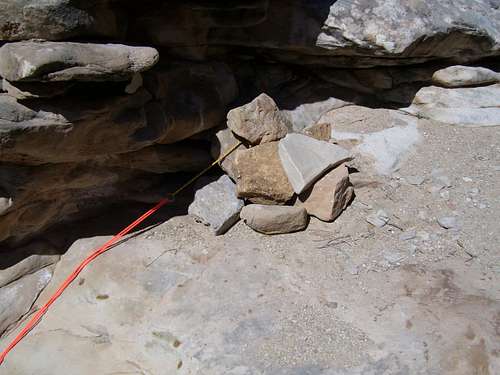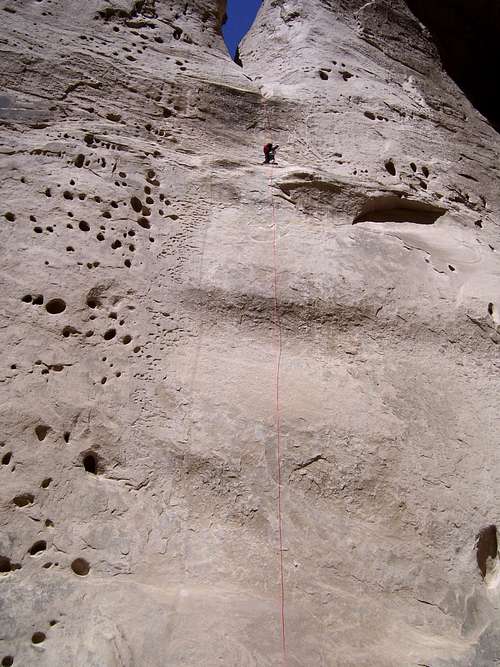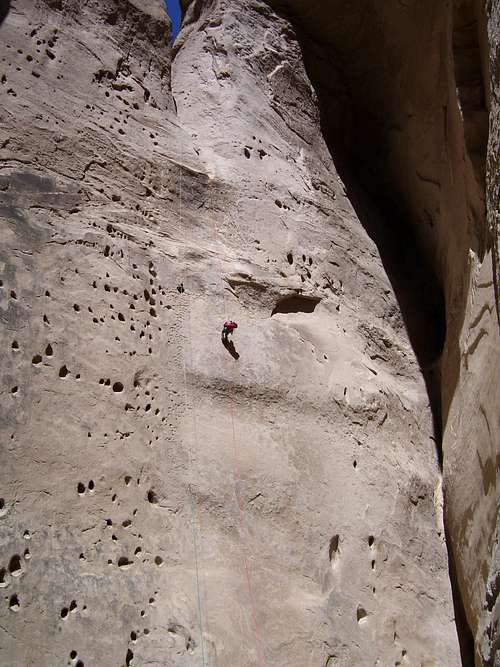Page 1 of 2
Earth/Mud Anchor Advice

Posted:
Thu Mar 11, 2010 7:02 pmby Alika
So over the summer, at home in Hawaii, I am hoping to rappel into several otherwise inaccessible hanging valleys. Some have small trees at the top to anchor too, but some area's do not. I will be rapping from the summit ridge line down. The summit ridge is very vegetated, but mostly by just shrubs and ferns etc. Does anyone have any ideas about building anchors in these areas? I was thinking about the feasibility of hauling large metal stakes of some kind up there, and I think this could work, but anyone have specific ideas or advice? These would likely all be "first descents" and the goal would be to explore these areas for rare plants, which is one of my primary interest and also what my summer job will be related to. The summit has packed dirt and mud on the flat ridge crest where the "trail" is, but the slopes on the windward side are essentially vertical moss and vegetation cover mud.

Posted:
Thu Mar 11, 2010 7:19 pmby rpc
when I saw your post, I was thinking: someone's off for a climbing adventure in Oregon's Columbia Gorge! I have not placed such things myself but have seen/relied on old railroad spikes (think ~12 inchers) in situ acting as belay/rap anchors.
edit in: if I were to place stuff, I'd go with something longer I think (sections of rebar??)

Posted:
Thu Mar 11, 2010 7:52 pmby Augie Medina
I am not familiar with the area so I'm going by your general description. As for metal stakes, how did you plan to set them as anchors? It would seem like deadman anchors are what you would use where you can't use trees or large trunked bushes. Are you likely to encounter any large boulders you could use for anchors? How many drops do you anticipate and what are the lengths? Are the drops wet or dry?
Does sound like a great adventure.

Posted:
Thu Mar 11, 2010 8:06 pmby mvs
I've wondered the same thing on those crests, the thought of having to build anchors is kind of horrifying!

I've been on the OHE-L (Oahu Hiker's listserv) for a few months now and there are some old timers there who have done a little bit of everything. At any rate I know they sometimes repair the fixed ropes on steep routes. You might ask them.

Posted:
Thu Mar 11, 2010 8:17 pmby ksolem
Just curious, are you planning to descend the canyons doing multiple rappels, committing to eventually exiting out the bottom, or will you leave a line fixed to ascend back up the way you came down?

Posted:
Thu Mar 11, 2010 8:22 pmby MoapaPk
I know this seems like a bizarre contradiction; but the canyoneers from Death Valley may have some tips. They occasionally rap off shrubs, but the shrubs there have deep roots.

Posted:
Thu Mar 11, 2010 9:05 pmby Alika
I am planning on fixing a line and jugging back out- I don't think there is any other way down. Gonna be dry drops, just muddy, really damp and covered in moss. As for the thin layer of dirt of rock, that is not really the case on Oahu, thats more of a Big Island/East Maui phenomenon, on Oahu it is pretty much just soil. No big boulders to be found.
MVS- I have talked to people from that OHE group, and I have worked with the HTMC trail clear and work crew. They usually use those green, t-shaped stakes, which is what i may have to do, but re-bar is lighter (sort of) and easier to drive. Stakes and deadman anchors seem to be the way to go I guess.

Posted:
Thu Mar 11, 2010 9:25 pmby jspeigl

Posted:
Thu Mar 11, 2010 9:39 pmby Augie Medina
Will you have company? If so, if you're rappelling and coming back up each drop you could have your buddies back up your primary anchor as "meat" to take some of the load off the main anchor.

Posted:
Thu Mar 11, 2010 10:04 pmby ksolem
Like 1000 says, you can use a second line to extend your anchor back from the lip of the ridge.
If you have a partner willing to put up with it, you could have them lower simultaneously off the other side and function as a counterweight. You should both be close to the same weight, and have a foolproof communication system worked out. Radios are good until someone drops one... Obviously both climbers need to be in a secure position before the other unweights the rope. Rock climbers call this simul rapping and use it to descend from spires which have no other anchors. Mountaineers will sometimes rope up and attempt to straddle a cornissed ridge as they climb in the hope of a similar outcome if the corniss blows.
Keep in mind that the repetitive action of jugging back up the line could well be harder on the anchor than a smoothly executed rapell.
And whatever you do, don't take my advice!


Posted:
Thu Mar 11, 2010 10:23 pmby MoapaPk
OP -- do you have some pictures of typical places you might want to go, with a distance scale, so we can know how ridiculous our suggestions might be?
Edit: like these?


Posted:
Thu Mar 11, 2010 10:31 pmby Autoxfil
Shrubs can be quite strong. Try pulling/digging one up and see how strong it is.
If they seems sturdy, tie several together with an equalizing arrangement (sliding X's) and back it up with another, non-equalizing setup.
Do this well back from the edge, and extend it over the lip with a static line.

Posted:
Fri Mar 12, 2010 1:33 amby norco17
Pickets? Forming stakes? Can you dig down to bedrock and bolt?
Maybe pack in a bunch of these and bury them on the other side of the ridge and equalize?


Posted:
Fri Mar 12, 2010 11:23 amby WouterB
Try some sort of soil drill. they often go deep (1.5m) and are quite light. They are easy to screw into the soil and if you hit a solid layer a bit down, you're set to go.

Posted:
Fri Mar 12, 2010 1:34 pmby Scott
This is a photo I took of one of the anchors we used in the San Rafael Swell in soft sandstone:

Caption:
This is one of the anchors that we constructed in Poncho Wash. To some whom are new to this country, it looks "manky", but to be honest in this soft rock such anchors are actually often more solid than bolts.
Here's another one:
http://www.summitpost.org/view_object.p ... _id=309739
Of course all anchors were tested first and then were all backed up with "meat" for all but the last person.
This is the rappel as viewed from below:






